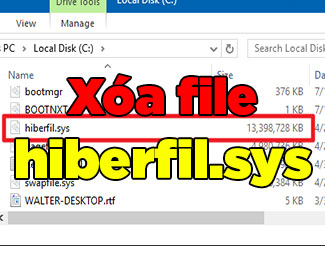How to change LPT port in CMOS
When connecting a parallel device to the computer, such as a parallel port printer, it may be necessary to change the mode the device is using. Change the conflict prevention mode or allow your device to communicate with the computer in the first place. Examples of parallel port modes include one way, bidirectional, EPP, and ECP.

- OUTPUT ONLY (AT) - Allows one-way communication from the computer to the printer but does not allow any communication from the printer to the computer. This is the slowest mode setting and will work with most string and / or needle printers. Most printers will operate with this mode selected, but newer printers will lose some of their capabilities.
- BI-DIRECTIONAL (PS / 2) - Allows communication between the printer and computer in both directions via the port. This mode allows the printer to let the computer know when it is ready to receive data. Slightly faster than Output Only , this mode should work with almost any printer. This mode will allow newer printers to use more of their capabilities, but will limit the printer's speed and some capabilities will be lost.
- EPP (Enhanced Parallel Port) - This is a bidirectional mode, allowing 2-way communication between the printer and the computer. This is the first mode designed for high performance printers. The printer must be specially designed for this mode. The most common printers that use this mode are laser printers and inkjet printers.
- ECP (Extended Capabilities Port) - This is the newest and fastest configuration among parallel port configurations. This is a bidirectional mode and will allow for an extended set of characters from the printer. Use of this mode is limited to the latest generation of inkjet and laser printers.
Usually, the older the printer, the slower the parallel port mode must be set for the printer or scanner to use. (Less common) Chain printers must use Output Only mode . The needle printer will generally operate no higher than Bi-Directional mode . They typically have a limited amount of memory and cannot process / print data at higher transfer speeds.
Laser printers and inkjet printers spans the entire range of different modes, although none require Output Only. A laser printer made before 1997 will almost certainly require the port to be set to Bi-directional mode . Newer printers will do well with EPP mode and if made on or after 1998, they should work fine in ECP mode .
To configure this setting in CMOS setup, look for the parallel port mode and change it from the current setting to the setting recommended by the peripheral manufacturer.
Reference: Instructions to enter the BIOS on different computer models to know how to get to the BIOS setup.
Tips:
If you are not sure which setting to use, the article recommends using either bidirectional or EPP, if available.
If your printer or other peripheral manufacturer is recommending an unavailable parallel port mode, see if your motherboard manufacturer is updating the BIOS. If there are no BIOS updates for parallel port expansion available, consider upgrading the computer motherboard.
Change the LPT port
It may also need to change from LPT1 (0x3BC) to LPT2 (0x378) or LPT3 (0x278). By default, all computers assign an LPT port to LPT1. If you are changing this value because of a resource conflict or need to add an LPT port, change the setting to manual in CMOS setup.
Some parallel port mode settings may not allow the Iomega drive and the computer to communicate properly. Because computer manufacturers personalize and make configuration changes in their systems, the best source for information regarding your parallel port mode settings is the computer's manual. .
Step 1. Find the parallel port mode setting in Setup on the computer. Parallel port mode settings can be found under Advanced Settings, Peripherals, Communication or Input / Output .
Step 2. If the parallel port mode is set to ECP or one way, change the setting to another mode.
Step 3. Exit PC setup and make sure you have saved your changes.
Step 4. Double-click the My Computer icon .
* Compaq computers with Compaq BIOS (setup) do not allow you to change the parallel port setting. You must turn off the DMA channel, this will cause the parallel port to go into EPP mode. Disable the DMA channel assigned to the port using the same hardware configuration for which the current port is assigned. This will change the mode from ECP to EPP.
Example: Change 0378-037F, IRQ 7 DMA2 to: 0378-037f, IRQ7.
Note : On some older Compaq, it may not be possible to specify parallel port settings without DMA settings. If this is the case, contact Compaq to be able to upgrade the BIOS.
You should read it
- Change port command in Windows
- How to replace CMOS battery
- What is CMOS and what is it used for?
- What is port 0 used for?
- How to convert WAN port to LAN on router
- How to change RDP port on Windows 11
- Instructions to change the Remote Desktop port
- What is AAA PC Port? Why do they have so many problems?
- How to connect printer 2.0 USB port to USB 3.0 port on Windows 10
- Summary of some simple ways to disable USB ports on Windows computers
- How to fix CMOS Checksum errors
- Instructions to change Port value on router
May be interested

How to install Bliss OS X86 on PC and VirtualBox

Difference between Sleep and Hibernate in Windows

How to enable / disable Hibernate mode in Windows 10

What is Hiberfil file and how to delete Hiberfil.sys in Windows

When to Shut Down, Sleep or Hibernate the Laptop Computer

How to enable / disable the Indexer Backoff feature in Windows






 How to replace CMOS battery
How to replace CMOS battery What is CMOS and what is it used for?
What is CMOS and what is it used for? Change port command in Windows
Change port command in Windows What is CMOS battery? Is it okay if CMOS battery runs out?
What is CMOS battery? Is it okay if CMOS battery runs out? What is a CMOS battery? Things to know about CMOS batteries
What is a CMOS battery? Things to know about CMOS batteries How to fix CMOS Checksum errors
How to fix CMOS Checksum errors